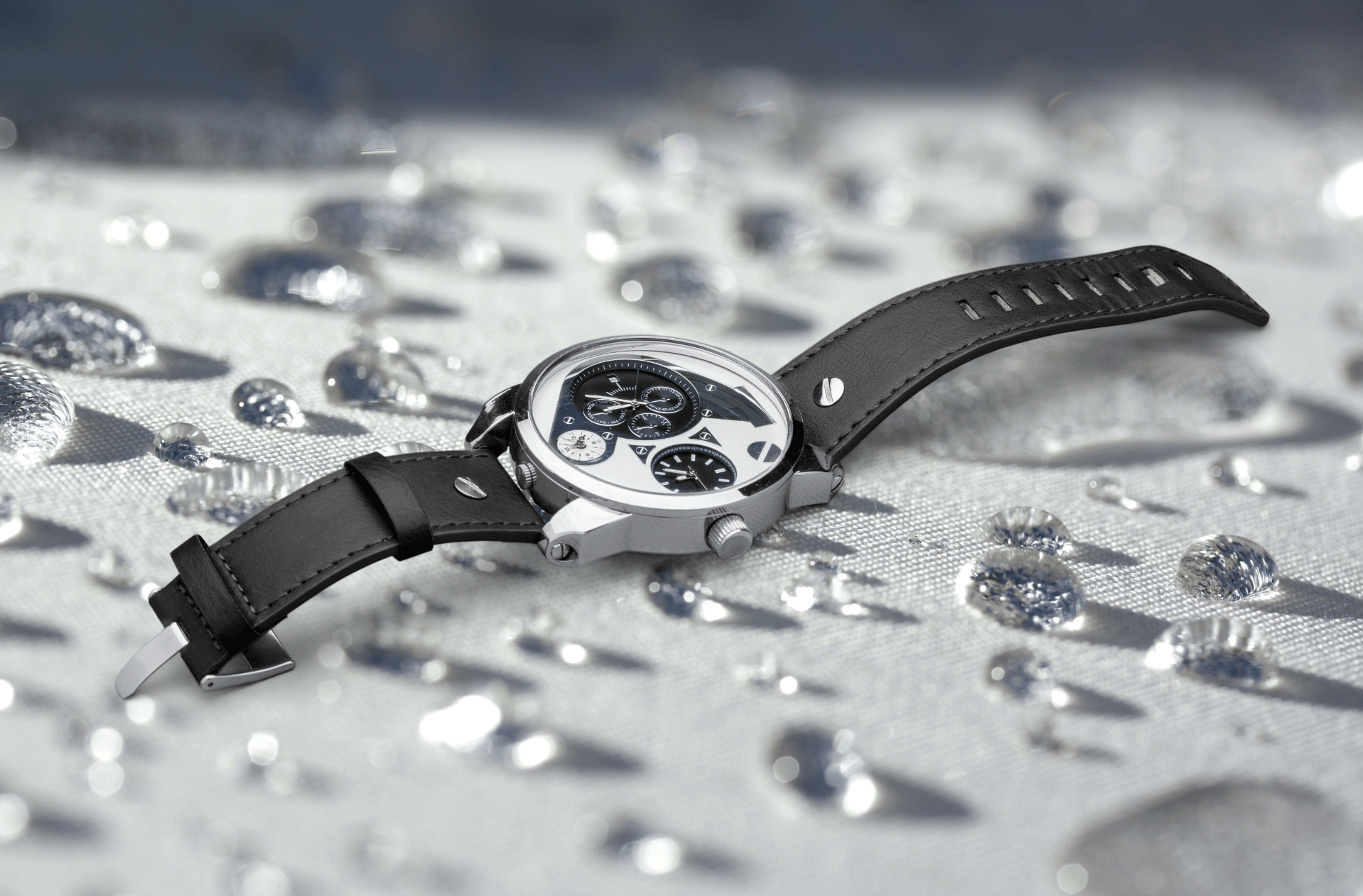My Shopping Bag
Your Bag is Currently Empty
Water Resistant? Waterproof? Water resistant watches can withstand a certain degree of contact with water. Waterproof watches are designed to be impenetrable by water.

Having a waterproof watch is really convenient for both everyday life and great adventures. It gives you the freedom to not have to think about protecting it the second it starts to rain, and can be a way for you to time your next swimming lap.
It can often be confusing when watches are labelled as ‘waterproof’ or ‘water resistant’ though. What’s the difference? And how do we know what our watch is really capable of? We’ll go through the details of waterproof watches so you know what you can and can’t do.
The terms waterproof and water resistant get tossed around and used interchangeably, but what do they really mean? Are they the same thing?
They’re actually two different things:
There are varying degrees of ‘water resistance’, commonly measured in ‘meters’ and displayed on the watch face. These range from 30m all the way to depths of 1,000m, but your standard watches will sit within 30m and 300m. It’s a common misconception that this number allows you to go deep sea diving at these depths. It’s easy to make the assumption that the number of metres is a direct description of how far down you can go, but that doesn’t account for the change in pressure.
A 30m water resistance rating only covers accidental splashes from the rain or washing up. A 50m watch is suitable for gentle swimming, but it's not until you reach ratings of 100m that a water resistance watch becomes suitable for real watersports.
The reason most watches are deemed water resistant rather than waterproof is because there are so many factors to consider. Changes in temperature and pressure can cause a lot of issues, leading to leaks.
Waterproof watches do exist and allow for full submersion. However, it’s a good idea to repair the seals every few years as they can weaken over time thanks to temperature fluctuation.
There are specialist watches that are designed to withstand significant depths and pressures. These are marked as 1,000m to allow for actual deep sea diving. It’s really only these watches that are guaranteed to be waterproof.
If you’re more concerned with an everyday level of waterproofing that allows you to go in a pool (rather than exploring lost shipwrecks!), then a rating of 100m would be enough to go swimming. Just make sure you avoid diving or showering with your watch - the immediate change in pressure and temperature will break the seal and force water into the mechanism.
Waterproof watches are made in a similar way to ordinary watches, but with a few extra reinforcements. Some of the main differences include:
These are also known as ‘0-rings’ and form a watertight seal where all the components join together. Typically made out of rubber, nylon or Teflon, they make a ring around the edge of the case and around each pusher (if it’s a chronograph watch).
Waterproof watches will have additional sealant in the case. A ring of hardening liquid is added to help keep water out of the watch.
A waterproof watch has to be able to withstand pressure. The case of a waterproof watch will be made out of stainless steel or titanium - or solid gold if it’s thick enough.
The case will also be attached differently; it will use a screw-in case rather than push-in, so it will have a much tighter seal.
Waterproof watches then go through a vigorous testing process. This can be done by two types of test: a dry test or a wet test.
It’s important to remember that watches don’t stay waterproof forever. Maintenance is inevitable no matter how well you care for your watch, and parts will need to be replaced over time, particularly the gaskets. However, increasing the longevity of your watch is a simple matter of science:
You’ll most likely come across ‘water resistant’ watches more frequently than waterproof ones, so you can use this guide to determine what depth you would need depending on how you want to use your watch. There’s a level to suit everyone and it’s possible to have a fully waterproof watch - it just needs to be maintained too.
Within the following brands or collections, you're likely to find a few water resistant watches:
You may want to explore from:
All watches featured in this story are available online from the WatchPilot website and in-store from our watch boutique retail store located in Richmond, just 30 minutes from Central London.
0 Comments
Please log in or sign up to leave a comment.